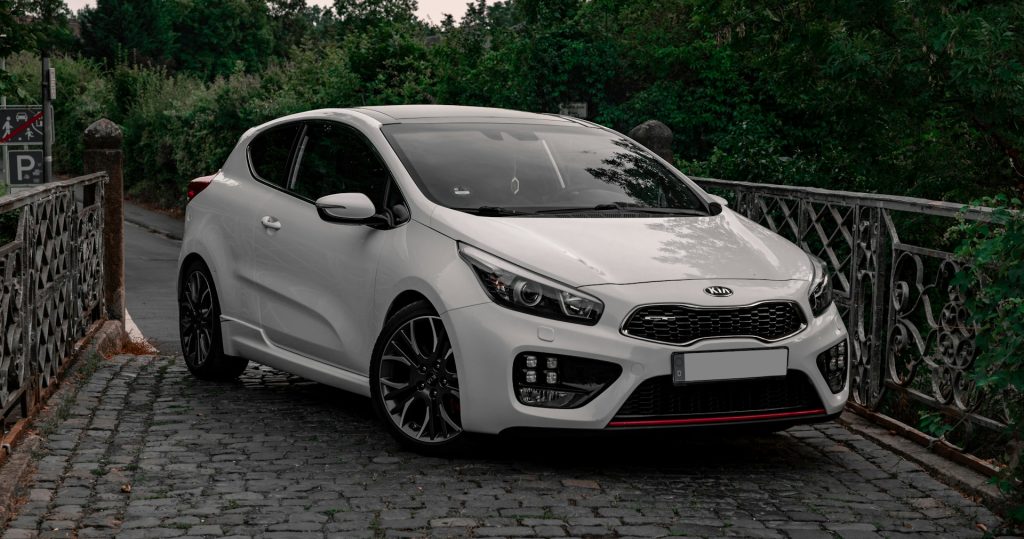
Image Source: unsplash.com
The alarming rise in KIA thefts has left many owners concerned about their vehicle’s security. What was once considered a reliable, budget-friendly option has become a prime target for car thieves across the nation. Understanding why these vehicles are particularly vulnerable can help owners take necessary precautions to protect their investments.
The Perfect Storm: Why Your KIA Might Be at Risk
Recent data shows KIA thefts have increased dramatically, with some cities reporting over 1,000% increases between 2020 and 2023. This isn’t random—specific vulnerabilities have made certain KIA models particularly attractive to thieves. Let’s examine the key reasons behind this troubling trend.
1. Lack of Engine Immobilizers
KIA models manufactured between 2011 and 2021 often lack engine immobilizers—electronic security devices that prevent engines from starting without the correct key. This critical security feature, standard in most modern vehicles, is absent in many older KIAs. Without immobilizers, thieves can easily bypass the ignition system using basic tools. The National Insurance Crime Bureau confirms this vulnerability makes KIAs twice as likely to be stolen compared to other brands. This security gap creates an easy entry point for even amateur thieves looking for an easy target.
2. Social Media Influence and the “KIA Boys” Phenomenon
The viral “KIA Challenge” on platforms like TikTok has dramatically accelerated theft rates by providing step-by-step instructions for stealing these vehicles. These tutorials, often created by groups calling themselves the “KIA Boys,” demonstrate how to break steering columns and start engines using just a USB cable. Social media’s amplification effect has turned what might have been isolated incidents into a nationwide trend. The widespread sharing of these theft methods has inspired countless copycats, leading to theft spikes in major cities across America.
3. Simple Tools Can Bypass Security
Unlike vehicles requiring sophisticated equipment to steal, many KIA models can be taken using everyday items like screwdrivers and USB cables. The simplicity of the theft method makes these cars particularly attractive targets. Thieves need minimal preparation or specialized knowledge to successfully steal these vehicles. This low barrier to entry means more potential thieves can target KIAs compared to vehicles with advanced security systems requiring electronic bypassing or key cloning technology.
4. Outdated Keyless Entry Systems
Older KIA models often use unencrypted key fob signals that thieves can easily intercept and copy. According to cybersecurity experts, the lack of advanced encryption in these systems makes them particularly susceptible to relay attacks. Modern vehicles use encrypted signals and rolling codes that change with each use, making them significantly harder to hack. This technological gap leaves many KIA owners vulnerable to sophisticated theft techniques that exploit these outdated systems.
5. Geographic Hotspots Amplify Risk
Certain cities have become epicenters for KIA thefts, creating a contagion effect as the practice spreads. Milwaukee earned the nickname “the KIA theft capital” after experiencing a 132% increase in KIA thefts in 2021. Chicago reported over 7,000 KIA thefts in 2023, nearly double the previous year’s figure. Other hard-hit areas include Minneapolis, St. Louis, and Cleveland. This geographic concentration creates environments where theft techniques are refined and shared, further increasing risk for owners in these regions.
6. Insurance Complications Compound Problems
Major insurers like State Farm have blacklisted certain KIA models in multiple states due to high theft rates. According to reports, affected models include the 2015-2021 KIA Forte, Optima, Rio, Sedona, Soul, and Sportage. This insurance reluctance creates additional challenges for owners, who may face higher premiums or difficulty obtaining coverage. The financial implications extend beyond the risk of theft itself, creating a secondary burden for KIA owners in high-risk areas.
7. Delayed Manufacturer Response
While KIA has implemented software updates and provided steering wheel locks to affected owners, these measures came after theft rates had already skyrocketed. The company made engine immobilizers standard only in 2022, leaving millions of vulnerable vehicles on the road. This delayed response allowed theft techniques to spread widely before countermeasures were implemented. Even with recent improvements, many older models remain at high risk without significant security upgrades.
8. Aftermarket Security Limitations
Many KIA owners rely on aftermarket security devices that may not fully address the specific vulnerabilities in their vehicles. While steering wheel locks and alarm systems provide some deterrence, they don’t resolve the fundamental ignition system weaknesses. Comprehensive protection requires multiple security layers, including electronic immobilizers and advanced alarm systems. Without these integrated protections, even vigilant owners remain at elevated risk compared to drivers of vehicles with built-in security features.
Protecting Your Investment: Beyond the Factory Settings
The vulnerability of KIA vehicles doesn’t mean owners are helpless. Installing steering wheel locks, aftermarket immobilizers, and parking in well-lit areas can significantly reduce theft risk. KIA’s software updates have shown promise, with vehicles receiving upgrades experiencing a 64% drop in theft rates compared to unprotected models.
Have you taken steps to protect your KIA from theft? Share your security solutions in the comments below!
Read More
5 Steps to Take After a Truck Accident
Unveiling the Crucial Role of Financial Experts in Car Accident Litigation